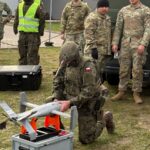
The U.S. Space Force's fiscal 2025 budget includes nearly $130 million for an Enterprise Management and Control (EM&C) system to enable military forces to switch rapidly from one satellite band, orbit, or communications network to another. Satellites for U.S. and coalition military forces will likely be in a variety of orbits, including those in proliferated low Earth orbit (PLEO) and what has been the military's main communications belt--geosynchronous Equatorial orbit (GEO)--such as the 10 Boeing [BA] Wideband Global Satcom satellites.…














